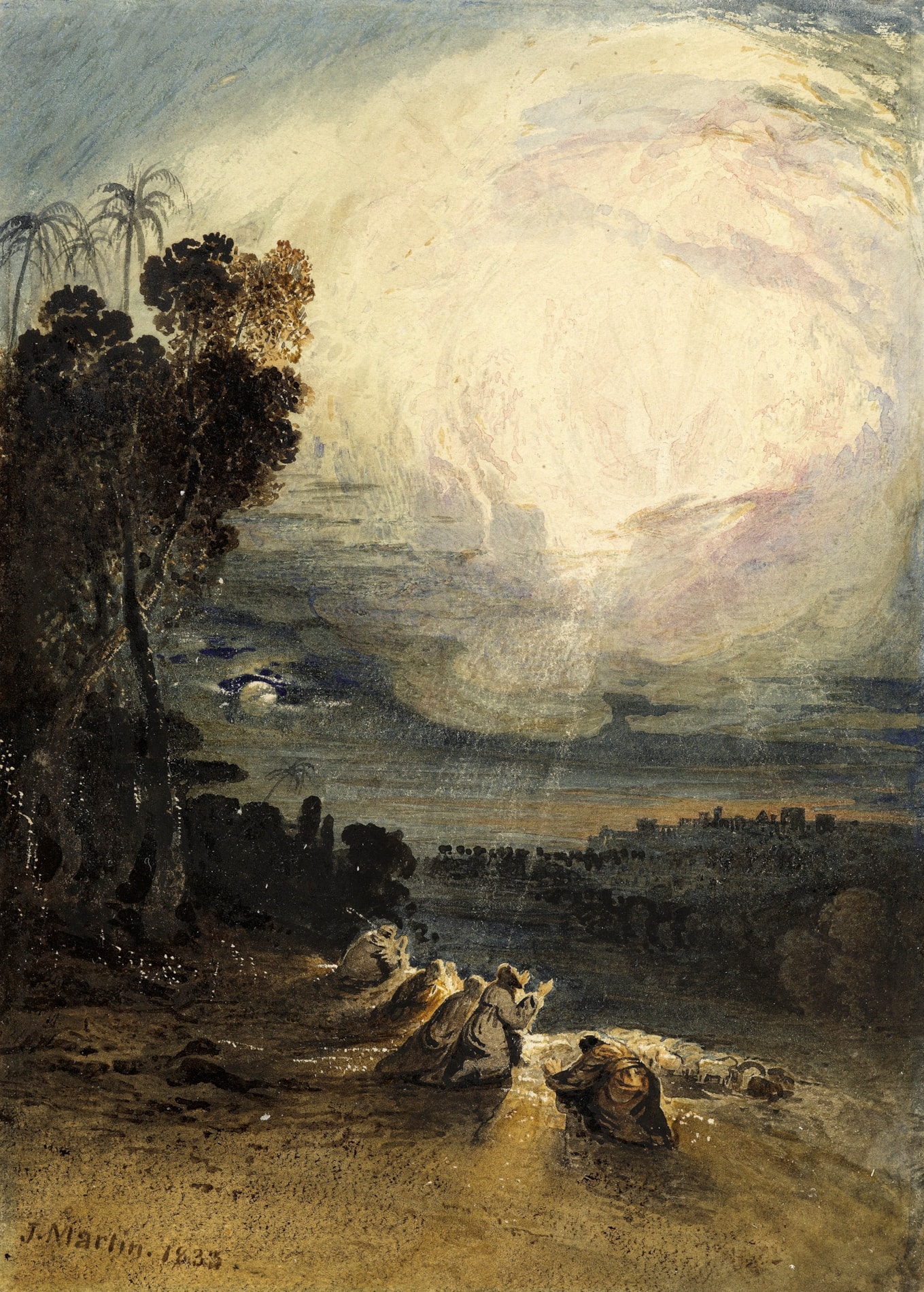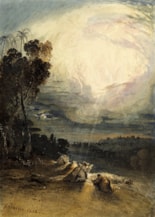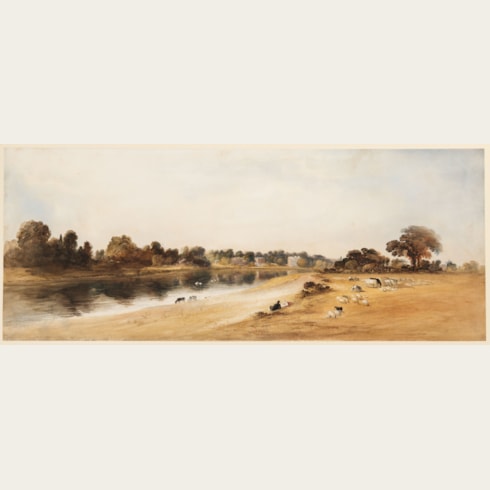John MARTIN
(Haydon Bridge 1789 - Douglas 1854)
The Annunciation to the Shepherds
Sold
Watercolour, heightened with bodycolour and gum arabic and scratching out.
Signed and dated J. Martin 1833.
181 x 130 mm. (7 1/8 x 5 1/8 in.)
Signed and dated J. Martin 1833.
181 x 130 mm. (7 1/8 x 5 1/8 in.)
John Martin was, as the scholar Martin Myrone has described him, ‘the pre-eminent creator of religious imagery during his lifetime, whose biblical illustrations endured long after his death’. Drawn in 1833, at the height of the artist’s success and prosperity, this lovely, refined watercolour is one of the earliest versions of a composition of The Annunciation to the Shepherds that Martin was to revisit, mainly in the form of prints, over the next decade. This watercolour, however, appears to be the only surviving depiction of this Biblical composition in an upright format, as all the other, later versions of the subject by the artist are horizontal in orientation. Signed and dated, this finished watercolour was almost certainly intended as an autonomous work of art, intended for exhibition or sale. The same is true of a larger and more elaborate watercolour of the same subject and date, but different in composition, which was on the art market in 1982.
The present sheet is an outstanding example of Martin’s skill as a watercolourist, a field in which he arguably remains underappreciated today. Offering a particular contrast to his large-scale, visionary oil paintings, intimate works such as this reflect a more lyrical side of the artist’s unique vision.
The present sheet is an outstanding example of Martin’s skill as a watercolourist, a field in which he arguably remains underappreciated today. Offering a particular contrast to his large-scale, visionary oil paintings, intimate works such as this reflect a more lyrical side of the artist’s unique vision.
Born in Northumberland, John Martin was apprenticed to a coach painter in Newcastle until 1806, when he settled in London, finding employment as a glass and china painter. He aspired, however, to be a painter of grand historical and literary subjects, and in 1812 achieved his first measure of success when his painting of Sadak in Search of the Waters of Oblivion was accepted by the Royal Academy for exhibition, and was sold soon afterwards for fifty guineas. Nevertheless, in the early part of his career, Martin’s livelihood was earned with small-scale landscape paintings, watercolours and sepia drawings of a classical inspiration, or topographical views in the Home Counties and elsewhere.
It was not until 1821, when his grandiose canvas Belshazzar’s Feast was exhibited to popular acclaim, as well as both critical and financial success, that Martin’s international reputation was firmly established. The dramatic compositions, imaginative effects and apocalyptic themes of Martin’s immense, visionary canvases of the 1820’s and early 1830’s – notably The Destruction of Pompeii and Herculaneum of 1822, The Seventh Plague of Egypt of 1823 and The Deluge of 1834 – captured the imagination of the viewing public. The artist’s celebrity was enhanced not only by the exhibition of these works, but also by the popularity of the prints that were published after (or inspired by) them, which were to eventually number more than 130. Indeed, in the late 1820’s and early 1830’s, Martin’s activity as a commercial printmaker provided a large portion of his income.
Martin’s last major paintings were a series of three massive canvases depicting The Last Judgement, begun in 1845 but not completed until 1853. Arranged in the form of an enormous triptych, the paintings were exhibited very widely over the next quarter of a century; not only throughout Britain but in several cities in America and as far afield as Australia.
Provenance
Anonymous sale, London, Sotheby’s, 13 March 1986, lot 129
Spink & Son, London, in 1987
Private collection, London, until 2011.
Literature
J. Dustin Weeks, “Darkness Visible”: The Prints of John Martin, exhibition catalogue, Williamstown and elsewhere, 1986-1987, pp.62-63, under no.50 (entry by Michael J. Campbell); Michael J. Campbell, John Martin: Visionary Printmaker, exhibition catalogue, York, 1992, p.170, under no. C.W.125.





